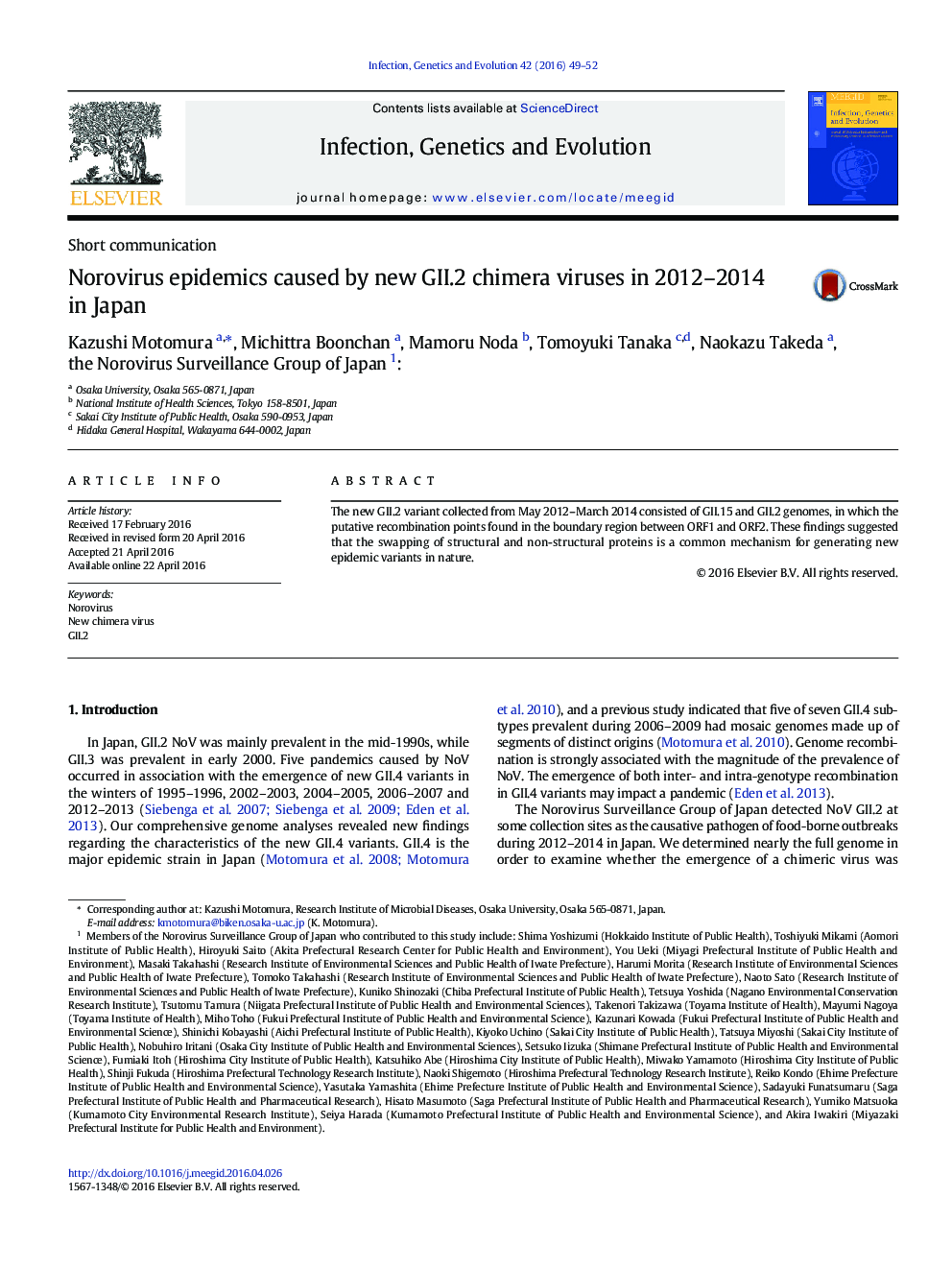| Article ID | Journal | Published Year | Pages | File Type |
|---|---|---|---|---|
| 5908098 | Infection, Genetics and Evolution | 2016 | 4 Pages |
Abstract
â¢Detection of atypical norovirus GII.2 cases in 2012-2014 in Japanâ¢Phylogenetic tree with the nearly full genome sequence, ORF1, ORF2, and ORF3 of NoV GII.2â¢Identification of mosaic genome segments of GII.2 and covariation of the new GII.2 epidemic strainsâ¢Recombination between GII.2 and GII.15 leading to atypical GII.2 NoV strains
The new GII.2 variant collected from May 2012-March 2014 consisted of GII.15 and GII.2 genomes, in which the putative recombination points found in the boundary region between ORF1 and ORF2. These findings suggested that the swapping of structural and non-structural proteins is a common mechanism for generating new epidemic variants in nature.
Keywords
Related Topics
Life Sciences
Agricultural and Biological Sciences
Ecology, Evolution, Behavior and Systematics
Authors
Kazushi Motomura, Michittra Boonchan, Mamoru Noda, Tomoyuki Tanaka, Naokazu Takeda, the Norovirus Surveillance Group of Japan the Norovirus Surveillance Group of Japan,
